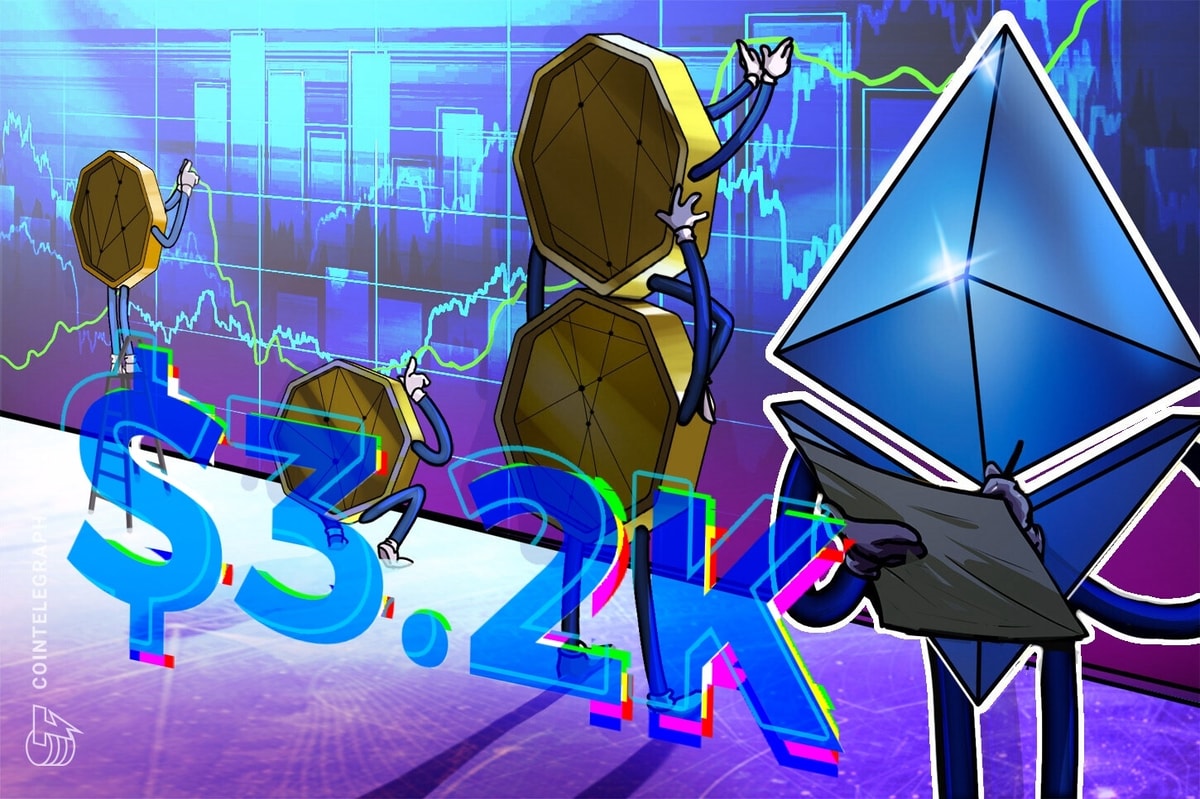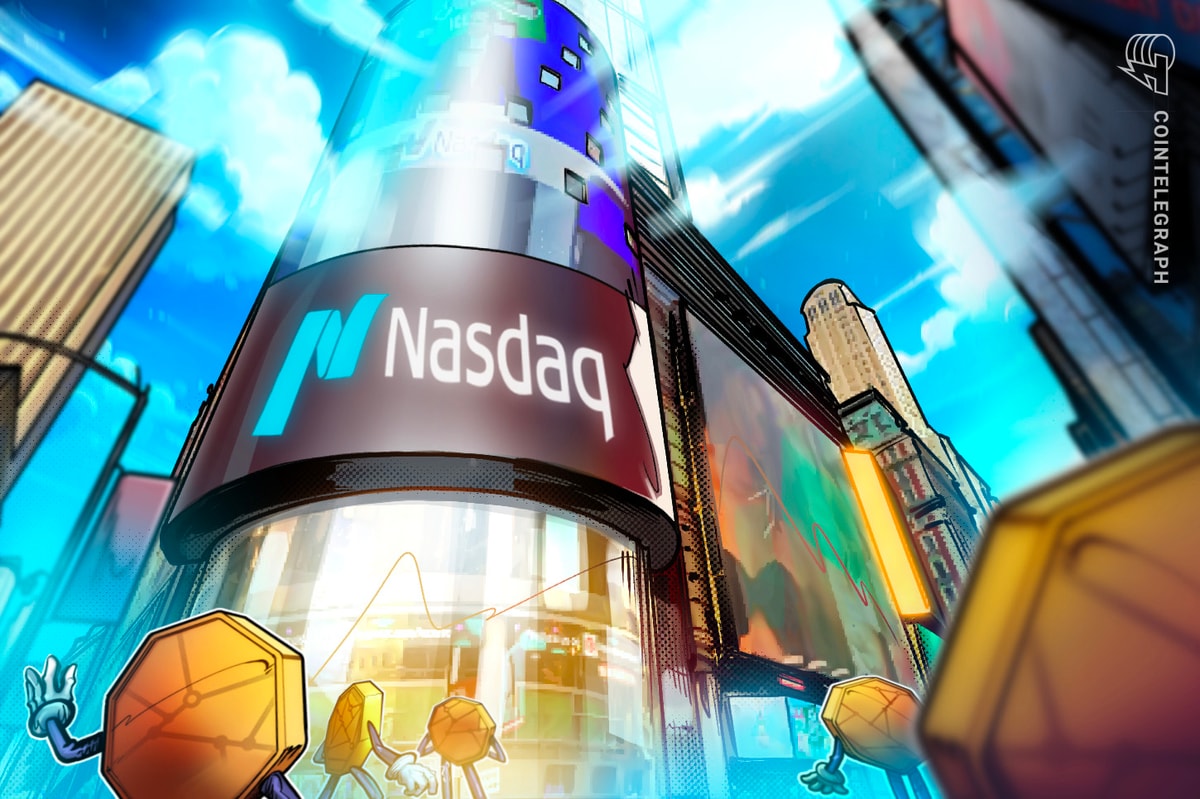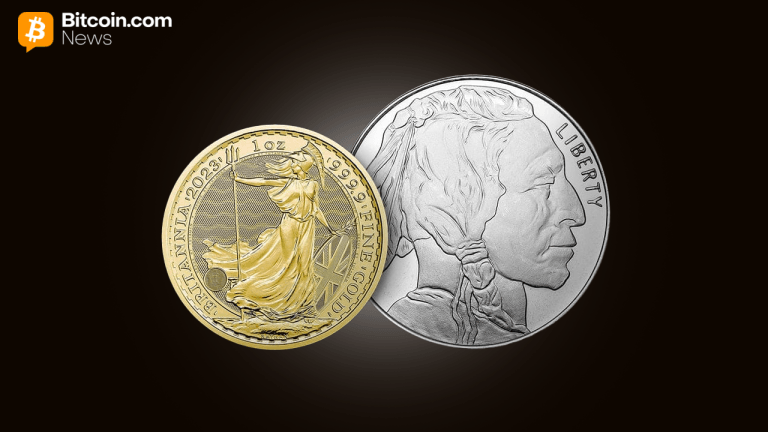What it’s actually like to use Bitcoin in El Salvador – Cointelegraph Magazine
13 min read
I attempted to spend two weeks travelling in El Salvador living on Bitcoin. I tried to pay for every single thing with Bitcoin, or Satoshis, small amounts of Bitcoin. Spoiler alert, I failed.
Outfoxed by car hire companies (fortunately my car of choice was not Fiat); stubborn restauranteurs, a parking meter, pupusas, and a fancy dress shop where I was obliged to purchase a multicoloured wig with a $5 bill, I could not survive in “Bitcoin Country” on Bitcoin alone.
So where did I go wrong? How did this happen? Isn’t El Salvador supposed to be Bitcoin Country? Is Bitcoin broken? Am I a scammer?
First up, there’s no denying: El Salvador is unashamedly a Bitcoin destination. From Bitcoin conferences, big name Bitcoiners, ubiquitous “Bitcoin accepted here” signs, a laser eyed President and oodles of Bitcoin investments streaming into the country like transactions into the Bitcoin mempool, the nation is the first and greatest sign of Bitcoin adoption worldwide.
Moreover, let’s not forget the motivations behind the the “Ley Bitcoin,” or Bitcoin Law, voted in on June 8th 2021. In a statement, El Salvador’s National Assembly, shareed:
“With the aim of generating employment opportunities, promoting true financial inclusion and generating economic dynamism, the deputies of the Legislative Assembly approved the Bitcoin Law.”
Considering the law’s three goals, it’s mission accomplished. El Salvador’s GDP is hockeysticking higher; job creation has ticked up; tourism soared over 30% just this year and figures for the government supported Bitcoin wallet, Chivo, would suggest that the country is banking the unbanked.
In addition, I have plenty of personal anecdotes of friends and Bitcoin people who emigrated to El Salvador, established businesses in El Salvador, or simply visited the country for the first time–when never in a hundred years would El Salavdor feature on their bucket list holiday destinations prior to Bitcoin. But when it comes to paying in Bitcoin, it’s tough.
Bitcoin was mapped out as a “peer-to-peer cash electronic cash system,” the first line of the Bitcoin White Paper states. 14 years on, and one year after El Salvador announced Bitcoin as legal tender for payments, it’s not quite there.
Upon closer observation of the Bitcoin Law, it becomes clear that Bitcoin as a medium of exchange is not the priority. Under article 7, the law states: “Every economic agent must accept bitcoin as a form of payment when it is offered by someone who purchases a good or service.” However, it doesn’t say how to do so, what to do with Bitcoin earned or why they should HODL or spend Bitcoin… For me personally, what on earth should Salvadoreans on the ground should say to me when can I arrive at the counter and say “Puedo pagar con Bitcoin?” (Can I pay with Bitcoin).
As a result, and unsurprisingly, my experience using Bitcoin varies wildly. From Bitcoin maximalist coffee shops running Lightning full nodes to cash-in-hand street merchants on volcano trails who literally cannot access the internet, El Salvador has certainly put a spell on “magic internet money”. I hope this article sheds light on the experience of paying in Bitcoin across the country: an investigative report, light-hearted entertainment, and maybe a handy guide for your trip to spend Satoshis in Bitcoin Country.
Know what you’re doing; Focus
The Lightning Network–the layer-2 payments network built atop Bitcoin–is fast, secure, and near free to use. It blows away Mastercard, Visa and any other legacy payment rail in terms of cost and efficiency. Personally, I believe it’s only a matter of time before retail, and in particular, micropayments, upgrade to the Lightning Network. Remittance payments are the first movers–as we’ve seen with Strike and CoinCorner’s moves into Africa–but retail is catching on. Once you see it in action, it’s hard to put the toothpaste back into the tube.
Nonetheless, the user experience (UX) of Bitcoin applications and wallets using the LN require some rehearsal. Over the two weeks in El Salvador, I made several mistakes scanning QR codes, interacting with waiters, tipping people and trying to live on a Bitcoin Standard.
Plus, I discovered new UX traits specific to emerging countries. Did you know that dark mode as a default in applications is awful for hot, tropical countries? In a field under baking sun, with dust and dirt in my eye, dark mode is like wearing a blindfold. Looking at you, Strike. Or, did you know that cracked phones screens make it harder to scan QR codes? This happened a few times during my trip.
Read also
Lightning Charges
I finished my first meal in the birthplace of Bitcoin adoption in El Salvador, El Zonte or Bitcoin Beach and was eager to pay in BTC. I devoured shrimp tacos with a seaview at Olas Permanentes, a beach hotel, and went to pay. Lightning invoice, scan, pay, done. So easy.
I then tipped the water: he fired up a QR code for me to scan. Jetlagged, bleary eyed and over confident following my successful first payment I scanned the QR and clicked send. I had forgotten the Bitcoin mantra, of “Don’t trust, Verify” and got stung.
The waiter had created a basechain invoice–not Lightning–on his wallet of choice, Bitcoin Beach Wallet. I don’t know why he did that–maybe it was an accident, maybe it was his lack of understanding. Either way, it meant that I paid a 10,000 Satoshi fee–about a dollar–and the transaction took 10 minutes to confirm. Silly Joe.
I soon observed that confusion around Lightning and Bitcoin Basechain is prevalent across El Salvador. In videos where I go to pay, I often followed with the bizarre inquiry when said out loud, “Where is Lightning?” Instincticly, El Salvadoreans would generate a QR code without checking–or because the in app UX favoured Bitcoin Base Chain over Lightning. Frustratingly, the government wallet, Chivo does this, for example.
Few Salvadoreans realised that these two English words (yes, not only do Salvadoreans have to learn Bitcoin, they also have to learn English) refer to entirely different processes. After a while, and typically while in smaller stores, bars and restaurants, I manually selected on people’s phones the “Lightning” option when paying–as they simply didn’t know what to do when I specified. I tried to explain the difference between Bitcoin and Lightning when my energy levels and patience would allow. Which leads me onto the next point.
Share your Bitcoin knowledge with El Salvador
Aged 21, I spent a year in Mexico City working as a teacher. Despite nearly a decade since this vibrant period of my life, I was often teleported back to moments in which I ventured explaining maths and science problems to students in heavily accented Spanish. Much like in Mexico, walking Salvadoreans through the differences between Bitcoin base chain and Lightning was rewarding and usually finished with a fist bump, a chuckle or a sigh of relief. Generally speaking, the Salvadoreans jumped at the opportunity to learn–and inevitably, the lightbulb would go off–and they’d wave me on my way.
But it left me wondering, why did this keep happening? Why did no one know relatively basic tenets to Bitcoin understanding? Undoubtedly, it’s because no one had taken the time to explain Bitcoin to them. And yes, maybe they should take their education into their own hands and become “Sovereign Indivduals,” but earning $20 a day, it’s unlikely they’ve found the time or motivation to read the Bitcoin Standard cover to cover. In the end, when an overly enthusastic spanish speaking Westerner arrives on their doorstep, and who could finally explain what on earth this Bitcoin thing is, they latched on. Or at least, they showed appreciation for my efforts.
Converserly, in the big chains where Bitcoin more or less worked, I was a borderline nuisance. In some stores, Bitcoin was poorly implemented, barely understood and scarcely used. Take SuperSelectos, one of El Salvador’s largest supermarket chains. At this brightly lit and lino floored outlet, the Lighting Network option was a clunky, manual digital payment path.
Or, in retail behemoth Walmart, the only options for foreigners paying in Bitcoin was over the basechain. Chivo works, but Chivo is only available to Salvadoran residents as you must provide government issued details. As per article 7 of the Bitcoin Law, it is possible to pay in Bitcoin in these stores, but why would you inconvenience yourself and the store when paying in dollars is so much quicker?
By comparison, I was lovin’ the LN experience in McDonald’s. I paid at a McDonald’s touch screen menu for a couple of coffees, and were I to race someone using a credit card or cash, I would have won. Comfortably.
A checkout experience smoother than a McFlurry and faster than a drive through, it seems McDonald’s is using El Salvador as a testbed for Bitcoin and Lightning adoption. If it works well, they might copy paste the experience to other Bitcoin-hungry jurisdictions worldwide. Personally, the payment journey in El Salvador beats the checkout experience I enjoyed in in Switzerland’s, Bitcoin friendly city, Lugano where LN payments went live this autumn. As a result of the slick checkout, McDonald’s became my go-to coffee pitstop when bombing across El Salvador.
As for the other major brands in El Salvador, I scratched my head: what conversations are taking place in head offices regarding to Bitcoin payments, and therefore Bitcoin adoption? Are sales teams undergoing Bitcoin education programmes, are data analysts crunching numbers on Bitcoin base chain vs Lightning payments; are businesspeople taking this Bitcoin adoption thing seriously?
Speaking of driving, the gas station experience was another bumpy road. The first petrol station I stopped at on the first day, globally recognised Texaco, was staunchly anti-Bitcoin. I know in hindsight that their lack of Bitcoin is technically breaking the law. In any case, I consulted Rikki and Laura, the travelling experts behind the Youtube series, “Bitcoin Explorers” to find out where I could trade digital energy for hydrocarbons.
I gleemed that at smaller Mom and Pop gas stations, it’s a question of patience, education and insistence–but you can get there. It’s just like the experience in smaller retail and hospitality spaces.
At the Uno gas station, perhaps the country’s third most popular fill up spot, there are signs saying “Chivo accepted here.” However, in reality, Chivo accepted here means that at some point, the option to pay in bitcoin was included on a point of sale screen somewhere. The attendants might have an idea about Bitcoin; they might even hold some BTC, but they also might not. In my case, they struggled.
Fortunately, I had a wonderful time explaining to my charming attendant the difference between Bitcoin and Lightning; his eyes smiled at me as he said “I’m learning so much!” as we went through another one of my crash course lessons on Bitcoin and Lightning. I managed to pay in Bitcoin, but again, the process was slow as there are so few people in the know.
A final thing on payments: to get into the national parks, they accept cash–not Bitcoin. An oversight on the government’s behalf. I asked some of the staff why I was expected to pay in dirty dollar bills to get into the Santa Ana volcano trail, and one of the guides said it’s because the internet is too patchy. I was pleasantly surprised by the quality of mobile data across the country, but it’s true that in certain places–notably high up or near volcanoes, reception dropped out. It didn’t stop me from sending Sats at 2,300 metres, to my guide, however.
It’s still very very early
A dear friend, Obi Nwosu, of Gridless Bitcoin mining and Fedimint custodying, compared the introduction of Bitcoin to El Salvador as like “trying to teach an entire population a new language.” To continue Obi’s metaphor, we are effectively looking at the adoption of French in a country that one year ago– with the exception of ze petit French village of Le Zonte–could not observe the difference between a pain au chocolat and a croissant.
One year on, the entire country recognises the French flag, President Macron and maybe they can hum the Marseillaise; plus a healthy majority can say “Je m’appelle José et j’ai 29 ans.” But there’s a very select, elite flew who are bilingual French speakers. That kind of expertise, or language fluency in Bitcoin takes hundreds of hours of effort, education and conviction.
Fortunately, a group called My First Bitcoin or Mi Primer Bitcoin, has realised the enormous potential of Bitcoin education in El Salvador and has rolled out Bitcoin diploma programmes. I attended the graduation ceremony for the third group of kids aged 13-15 in El Pacheco, in the outskirts of San Salvador and was impressed with their use of Bitcoin.
I interviewed a few of the children in Spanish to query their understanding of Bitcoin. Naturally, I sent them a few dollars in Bitcoin as thanks (but also to see how quickly they created invoices). I was blown away by their confidence and ease of explaining complex topics such as hot or cold wallets. These guys were freely transacting and paying with Bitcoin, encouraging signs for the future. As an aside, I was the first English person the kids had ever met or interacted with–so inevitably they asked for selfies and photos!
Furthermore, while Bitcoin is indeed a new language; a new means of transacting, it’s also a very young technology. Bitcoin needs time to iron out and grapple with UX issues and amass and take advantage of more user feedback. Companies who take the Bitcoin Bull by its horns now will undoubtedly reap the rewards as and when the country warms to Bitcoin payments, or when a price uptrend comes back around.
Take Latin American telecoms company, Claro, who adopted Bitcoin as a payments route early on in the country’s Bitcoin journey. The process of topping up a sim card is now easier and faster than using traditional payment methods. Paying with Lightning is ahem, Lightning Fast. No need to fill out credit card details–you simply copy paste or scan a QR code and you’ve paid.
Bitrefill, a crypto payments company that’s heavily invested in El Salvador through billboards, sponsorships and influencer marketing, is another company taking a longer-term view on living on crypto. The company seamlessly connects big brands to cryptocurrencies–yes, crypto–not just Bitcoin, with giftcards.
Subscribe
The most engaging reads in blockchain. Delivered once a
week.
I used Bitrefill with taxi company Uber as I couldn’t find the “pay with Bitcoin” option in the Uber app one night. It could also be user error, though; I was mildly intoxicated after a few cervezas at the conference. Notwithstanding, I found the Bitrefill app easier to navigate and I was well practiced having used the app around the world previously. I also bought an AirBnB voucher through Bitrefill in a couple of clicks to book a stay near San Salvador airport as again, AirBnB and local Bitcoin payment options appeared too complicated at first look.
Interestingly, Bitrefill have amassed swathes of data on crypto payments including Bitcoin, Lightning, USDT and many more. Early in 2022, Bitrefill CEO, Sergej Kotliar said that the Lightning Network is like teenage sex: everyone claims they’re doing it–but it’s far less common than teenage angst would lead you to believe. In El Salvador, if I can continue with the crass analogy, then the Lightning Network is like marital sex. Most people know it’s there; some people pretend it isn’t–and it is certainly not very cool to talk about it.
Recognition is the first step to acceptance
When I travel to new countries or cities, I like to try to register and understand Bitcoin sentiment. I stand in the street wearing a smile and a Bitcoin t-shirt, holding a microphone. I ask people what they think of Bitcoin, and I try to brighten people’s day by giving them some free money–usually it’s the first time they’ve ever interacted with Bitcoin. Here’s an example from France.
In the above example in France, some people have never heard the word Bitcoin before; few people recognised the logo; most didn’t know that Bitcoin is valuable. In El Salvador, I bet that every single Salvadorean knows that Bitcoin is money. I stood in San Salvador for a few hours asking people’s opinion on Bukele. If they answered five questions about their country, I’d send them $5 in Bitcoin. This deal was quick and easy, plus sending people money was faster still – they logged into Chivo (if they remembered their password) and I sent the Satoshis.
The point is, although paying with Bitcoin is hard right now, I’m also being demanding. The mere fact that Salvadoreans can point to the Bitcoin B and understand what it is shows how far ahead El Salvador is on the Bitcoin adoption curve. In one year, Bitcoin payments in El Salvador has surged from a tiny surfer community on the beach to being accepted means of payment in most places.
So what it’s actually like to use Bitcoin in El Salvador? Well, Bitcoin Country is a place where, if you put in the Proof-of -Work, you can pretty much live off Bitcoin. I cannot say that about any other continent, country, or region in the world. And trust me, I’ve tried plenty of places.
Read also






